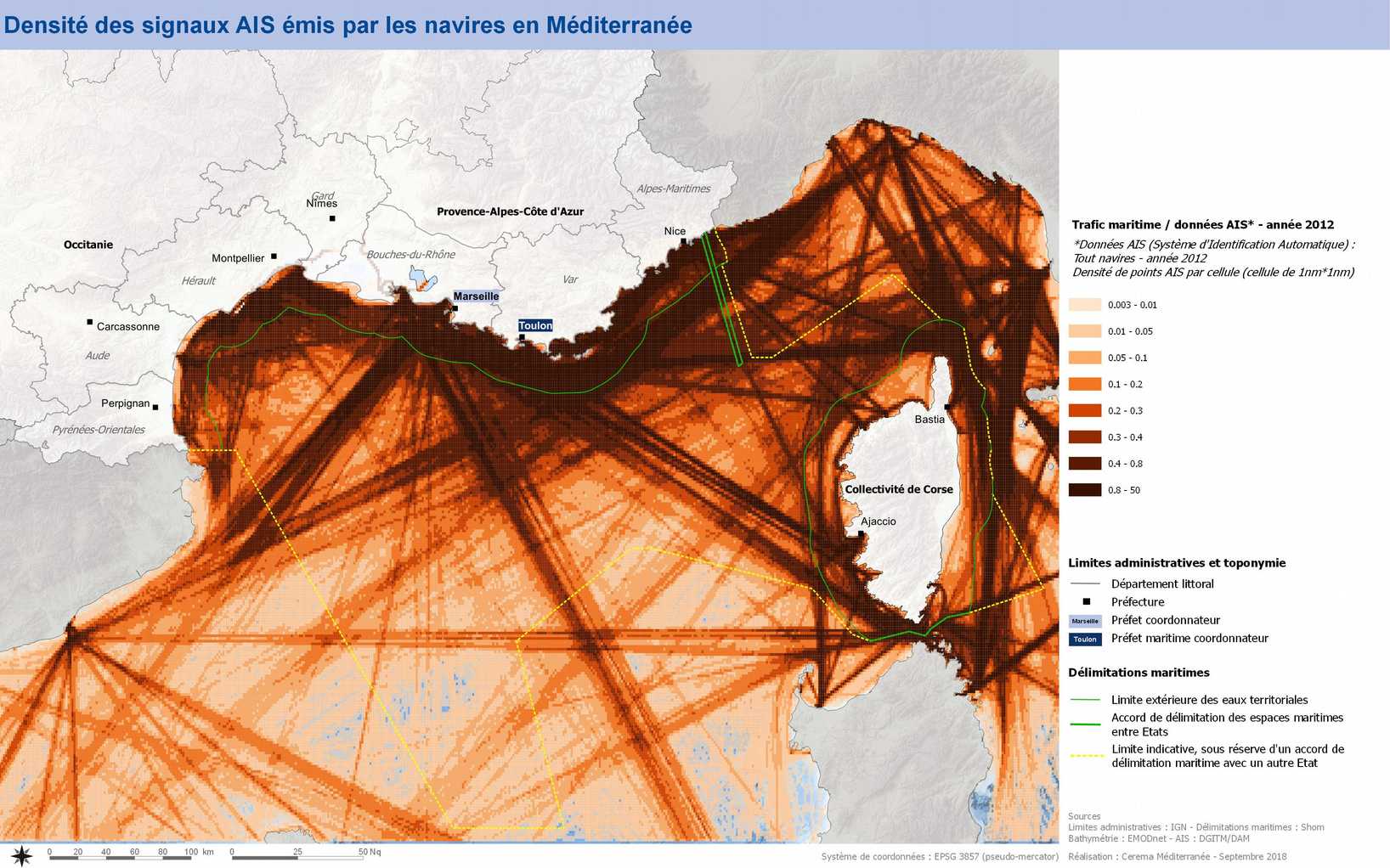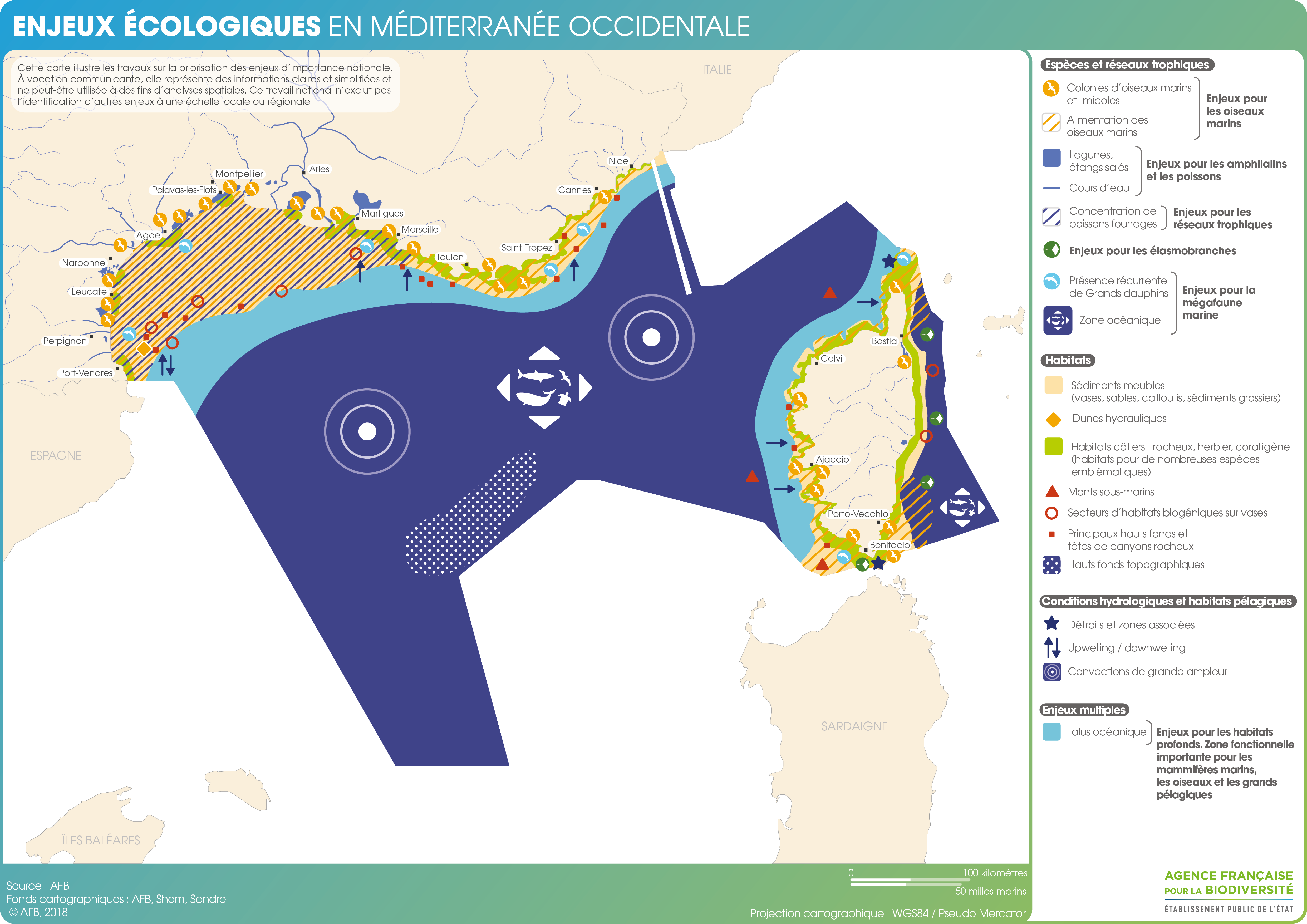FRANCE
In February 2017, France published a national strategy for the sea and coast (SNML), setting out its long-term goals in this area. This document forms the baseline for environmental protection, optimisation of marine resources and the integrated, consensus based management of activities relating to the sea and coast. The role of the National Council for the Sea and Coastal Areas (conseil national de la mer et des littoraux ), made up of elected officials and representatives of civil society, is to develop, enforce, monitor and assess this strategy.
The national strategy for the sea and coast sets out four long-term objectives: deliver the essential ecological transition; develop a sustainable blue economy; restore good environmental status and uphold France’s ability to wield influence as a seafaring nation. It establishes a framework for action via four strategic orientations: building on knowledge and innovation; developing sustainable, resilient maritime and coastal spaces; supporting and promoting initiatives and clearing obstacles; promoting a French vision within the European Union and in international negotiations and upholding national interests.
For each coastline in metropolitan France, a planning document – the Sea Basin Strategy Document (document stratégique de façade – DSF ) – refines and supplements the general orientations established by the national strategy, reflecting the economic, social and ecological considerations specific to each sea basin.
France has chosen to use sea basin strategy documents to address the requirement to embody two European framework directives:
- The “Marine Strategy” framework directive (EU Directive 2008/56 of 17 June 2008), which aims to achieve or maintain “good environmental status” for marine environments by 2020.
- The “Maritime Spatial Planning Directive” (DCPEM – EU directive 2014/89 of 23 July 2014), which establishes a framework for maritime spatial planning and calls upon member States to coordinate their activities at sea.
Relevant Technical Information
- Support to the National Competent Authorities: The General Secretariat of the Sea and the Ministry of the Sea
- Support to the French data Portals and data harmonization for MSP
- Dissemination and formation on MSP and Ocean Literacy at national level
The sea basin strategy document addresses the development of activities, and controlling or reducing the pressure exerted by humans on marine and coastal environments. For the first time, a set of maps has been produced that give the general public an overview of the issues and define preferential locations for activities and focus areas for conservation of the marine and coastal environment. The aim is to coordinate activities and prevent conflicts resulting from the diversification and densification of uses of the sea and coast. Combined development of human activities must not be allowed to compromise the objective of achieving or maintaining good environmental status.
Due to the interactions between the land and sea, solutions do not lie exclusively offshore. Catchment areas and onshore spaces influence maritime and coastal spaces via issues relating to water quality, land use, large-scale urban, tourist and agricultural development, projects for offshore activities, etc. The sea basin strategy document must be coordinated with other documents relating to catchment area and coastal management, such as strategies by local authorities, water development and management masterplan (schémas directeurs d’aménagement et de gestion des eaux – SDAGE, embodying the European framework directive), regional development, sustainable development and territorial equality programs (schémas régionaux de développement durable et d’égalité des territoires – SRADDET), regional integrated development plans (schémas de cohérence territoriale – SCOT) and local (or inter-communal) urban development plans (plans locaux d’urbanisme – PLUi).
When dealing with conflicts of use, this document helps stakeholders and authorities to identify conciliatory solutions depending on the area in which they are located, but rarely provides a clear verdict in favour of a particular solution, as such choices must also be informed by local analysis. The document provides guidance for growth activities, helping to determine areas in which their development will be appreciated (without granting them any form of exclusivity, however).
The sea basin strategy document is produced by the French State. At national level, it is overseen by the Ministry for Ecological and Inclusive Transition. Locally, the Atlantic maritime prefect and the prefect of the Nouvelle-Aquitaine region are tasked with its production, in their capacity as coordinating prefects. These two prefects are supported by a unified consulting body, the Sea Basin Council (Conseil Maritime de Façade), which is a forum for discussion between stakeholders with interests at sea, along the coast and on land. The general public was invited to contribute, via a preliminary consultation exercise supervised by the French National Commission for Public Debate.
The sea basin document is organised in four parts, each intended to be enriched and amended in the light of improvements in available knowledge, and updated in subsequent six-yearly reviews of the document.
- Initial assessment, challenges and a vision for the coast in 2030 (Part 1)
- Strategic objectives defined from an economic, social and environmental perspective, together with related performance indicators. These objectives are accompanied by a “vocations map” that, for each maritime space, defines the areas consistent with the challenges and general objectives assigned to them (Part 2)
- Evaluation procedure for assessing implementation of the strategy document (Part 3)
- Action plan (Part 4)
This sea basin strategy document contains parts 1 and 2. Parts 3 and 4 are to be produced at a future date, no later than 2021 and early 2022, respectively. The sea basin strategy comprises a main document providing an overview, and a series of nine appendices that contain further information relating to the scientific and technical analyses conducted for the initial assessment and to the content of the strategic objectives and planning.





